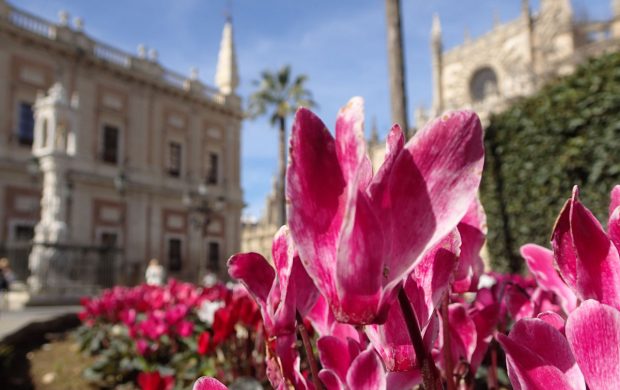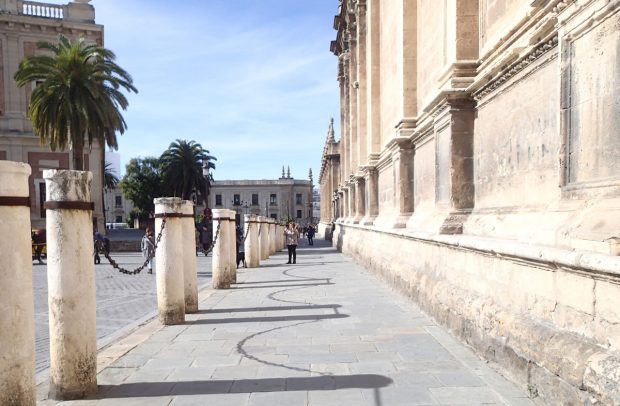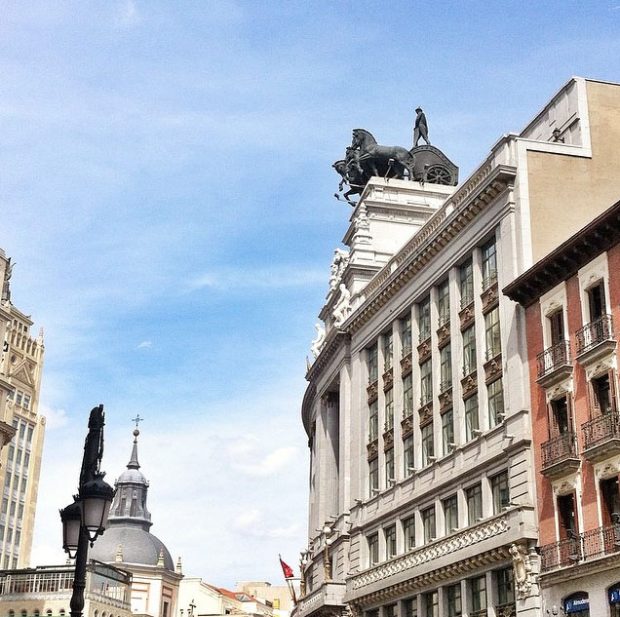I’ve been visiting Spain as a tourist for as long as I’ve been visiting Europe. On my very first Eurotrip, after my freshman year of college, I came to Spain: Madrid and Barcelona. When I started my trip around the world, I started in Spain with four weeks traveling by bus and train through Andalusia and the Mediterranean coast. And since living in Europe, I don’t think there’s been a country I’ve visited more times than Spain—weekend trips to Barcelona, San Sebastian, Valencia, Madrid, Malaga, Cadiz, Seville. I just can’t get enough of this country. (I’m even writing this today from Valencia!)
So when I read recently in a press release about Spain having more gay tourists than any other European destination, I wasn’t surprised. There’s this special pull from Spain that makes it an absolutely fantastic travel destination. The people, the places, the history, the food, the drinks, the prices. Spain is one of the most exciting, interesting, fun and fascinating places to visit. Not just in Europe, but maybe the world.
Everything You Need To Know About Visiting Gay-Friendly Spain
Spain is one of the easier countries to visit as a tourist, thanks to the friendliness of its people. But a lot of people don’t realize just how easy (and enjoyable!) it is to visit Spain. I think that’s what makes it such a popular choice. But be careful: once you visit Spain the first time, you’ll want to return. There’s so much to this country than Madrid or Barcelona, so much more than paella and tapas, so much more than hunky men and flawless flamenco dancers. Spain is as diverse as anywhere else (probably more so), but it’s also quite surprising as a travel destination. That’s what keeps tourists coming back for more, whether it’s on annual holidays to the beach, on cruises, or city breaks to Spain’s sexiest cities.
When to Visit Spain
Thanks to the country’s location on the southernmost tip of Europe, and Spain’s relatively large size (roughly the same size as California), Spain benefits from a wide range of temperatures making it a great year-round destination. In the summer, southern Spain is swelteringly hot to the point that it can be almost unbearable for many international tourists (and many locals who escape the August heat with their own extended holidays). But in the winter, southern Spain enjoys warm temperatures, ones that would be recognizable to most northerners as summer. In northern Spain, in Galicia, you can expect the summers to be hot and the winters, cold. Spain is a year-round destination.
Deciding Where To Visit
With Spain’s diversity of destinations, there’s really no end to where you could go. Most tourists start with Barcelona and Madrid, the country’s two largest cities. But other cities make for great weekend escapes, with the islands popular for holiday-makers as well. And just like the mainland, some islands are more for the party-goers, while others are for nature-lovers. Diversity!
For culture, the capital of Madrid is a clear winner with an incredible array of museums from contemporary to classic. The Prado Museum in Madrid is one of the world’s best museums with Spanish classics like Goya and Velázquez. Though Barcelona and its unique architecture by Antoni Gaudí make it an equally interesting city break. The entire city of Barcelona feels like an art museum thanks to Gaudí’s ever-present influence.
For sun, the southern coast and Andalusia is a popular destination: Cadiz as a popular cruise port and Malaga on the opposite coast for other sun-seekers. Obviously the Spanish islands, both those in the Mediterranean and the Canary Islands in the Atlantic Ocean are great for sunshine and warm weather—even in the winter!
For hiking and trekking, the north is popular—especially considering the epic Camino de Santiago pilgrimage and the Pyrenees in Catalonia.

The Mercado Central in Valencia is one of Spain’s largest food markets — like many others in the country, it’s from the Modernist and Art Deco time period
For food, really anywhere would do! Spanish cuisine is so unique and special. Thanks to so many different influences over the past thousand years, from the Moors in the south to the French in the north, the food choices can be overwhelming. There’s so much more to Spanish food than just paella and tapas! In the Basque region, especially around San Sebastian, pintxos are the norm—small plates similar to tapas, but often more hearty. Paella originates in the region around Valencia, where rice is grown right along the seaside—perfect for the combination of saffron-flavored rice with seafood and meats. Granada and the south has many more Arabic-flavors thanks to the influence from the Moors who occupied the territory for almost 1,000 years. Catalunya is also known as a food hotspot with famous Catalan dishes like crema catalana and patatas bravas. My favorite Spanish foodie cities however are: Seville, San Sebastian, Valencia and Barcelona.
As a gay-friendly destination, most of Spain is going to be open. But again: it’s the bigger cities where you’ll find the larger concentrations of gay locals. Barcelona is one of the world’s most gay-friendly destinations, and Madrid’s gay community is also vibrant (plus they have one of the world’s largest gay pride festivals each summer!). But other parts of Spain are equally gay-friendly. Sitges, a half-hour outside of Barcelona is a bit of a gay mecca, and some of the islands like the Canary Islands and Ibiza have their fair share of gay nightlife. Gran Canaria actually hosts Spain’s second most popular gay pride festival.
What Makes Spain So Special?
It’s got to be the culture. The people are often friendly and patient. The food is fresh and flavorful. The cities are lively with frequent festivals, open spaces (and plazas—so many plazas!) and navigable public transport. The weather is desirable—some of the best sunshine available in Europe, year-round. It’s hard to not tire of a place so welcoming, so friendly and so approachable.
Even for those with limited (or non-existent) knowledge of the Spanish language, the country can still be quite accessible. Learn a few words before traveling (maybe with a language app like Duolingo) and you’ll find the locals more than happy to help you even with the language barriers. The beauty of España.
But, like I’ve said above, Spain is truly a diverse and welcoming country. And there’s a lot that the country offers.




We just returned from our first trip to San Sebastian! Amazing. Can’t say enough about this beautiful town – especially during the misty, cool off-season in January. We too return again and again to Spain – we’ve got our eyes on retiring in Sevilla. But no matter where you go, you can’t go wrong in Espana!
So true Robert! Sevilla is one of my favorite cities in all of Europe so I can see the appeal of retiring there :)